Gmail Deliverability Issues: Why You Should Set Up Google Postmaster
Published on September 18, 2023/Last edited on September 18, 2023/5 min read


Esther Perez
Email Deliverability Principal, BrazeYou diligently track metrics across your campaigns like open rates, bounces, and spam complaint rates to stay on top of trends and monitor deliverability performance. But wait…you dig deeper to look at complaint rates and mysteriously find no complaints from Gmail. How is this possible? And how do we figure out if something is amiss with Gmail?
It may come as a surprise, but Gmail does not offer a traditional Feedback Loop (FBL) like most other Mailbox Providers do. An FBL is what allows an ESP like Braze to receive complaint data back from the recipient server and appropriately suppress those addresses from receiving further emails. This is why you may never see a spam complaint from a Gmail user in your list, something that can lead you to miss an obvious indicator of negative metrics that will impact deliverability health at the biggest mailbox provider worldwide.
Fortunately, there’s a way to help address this: You can set up Google Postmaster Tools and connect it to the Braze platforms’s Deliverability Center, which offers two very useful data points that can help you determine your performance and reputation standing at Gmail.
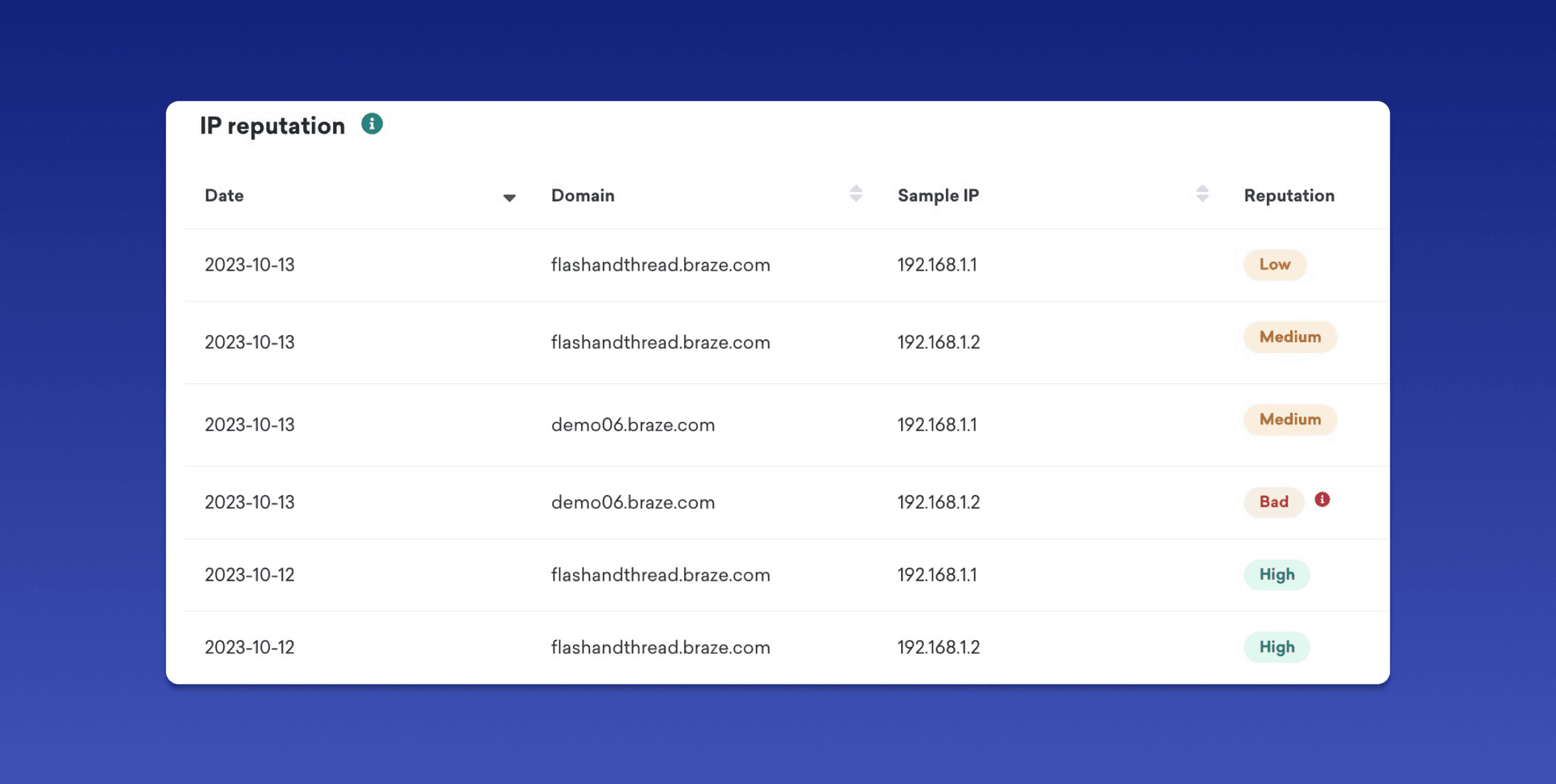
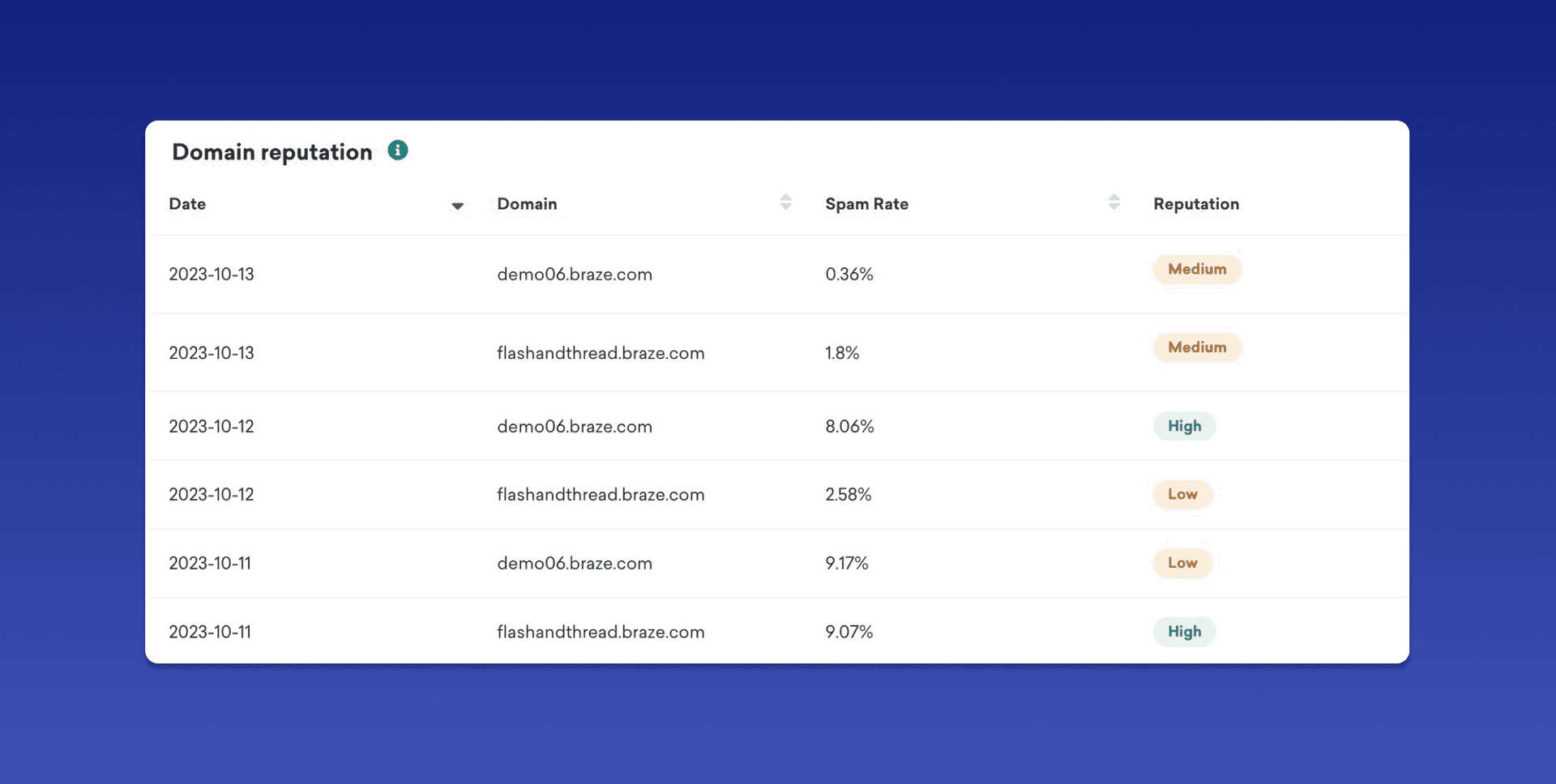
Spam Rate and What it Means
The complaint rate you generate as a sender is vital information for the health of your email program, since spam complaints from your users are a heavy negative metric that can cause your reputation to deteriorate over time. As you now know, you won’t be seeing spam complaints from Gmail users in your dashboard reporting at any ESP—Braze or otherwise. Google Postmaster solves this problem by allowing you to view an aggregated day-to-day spam complaint rate for your subdomain’s traffic via our Deliverability Center’s Domain Reputation report.
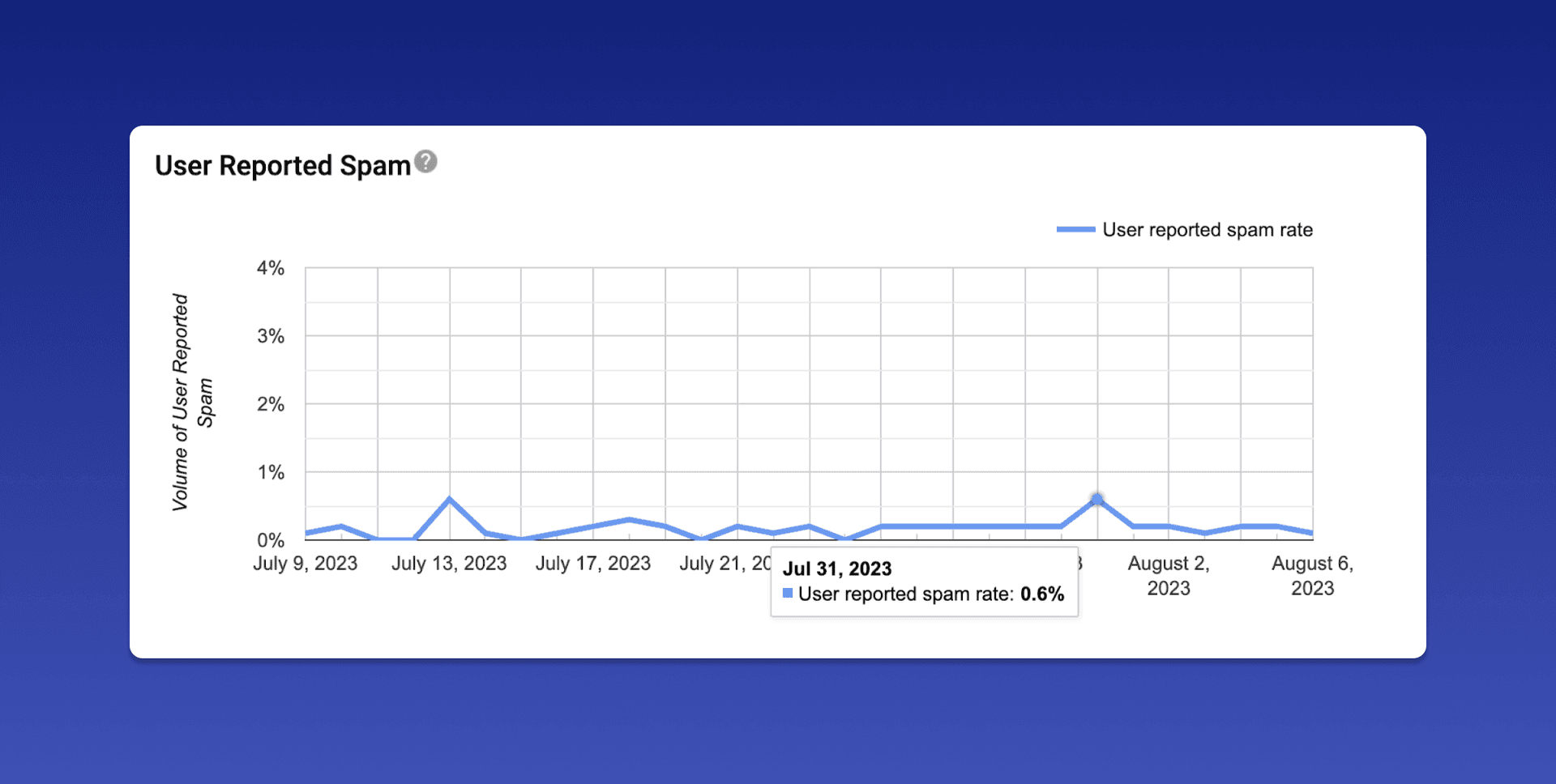
This graph shows you an example of the percentage of complaints generated by Gmail users respective to your volume in a given day (up to a maximum of 120 days). Cross-referencing higher complaint days with your campaign schedule can be very handy in assessing if there are adjustments to be made to a particular audience or campaign based on spikes in complaint data.
For instance, July 31 above generated a 0.6% complaint rate, which is very high considering the standard best-practice threshold is below 0.1%. Given this drastic increase compared to most other sending days, you could then examine the campaigns and audiences that were targeted on that day. For example, if you find that July 31 coincided with a large win-back campaign that stretched the usual segments to include disengaged users, making positive adjustments like tightening engagement criteria can quell the chances that you’ll see additional complaint spikes moving forward.
Understanding IP and Domain Reputation
Another great benefit of Postmaster Tools is that Gmail gives you a full picture of your IP and domain reputation. In the IP and Domain Reputation dashboards, you can view the reputation that has been assigned to both your subdomain and its associated IP addresses:
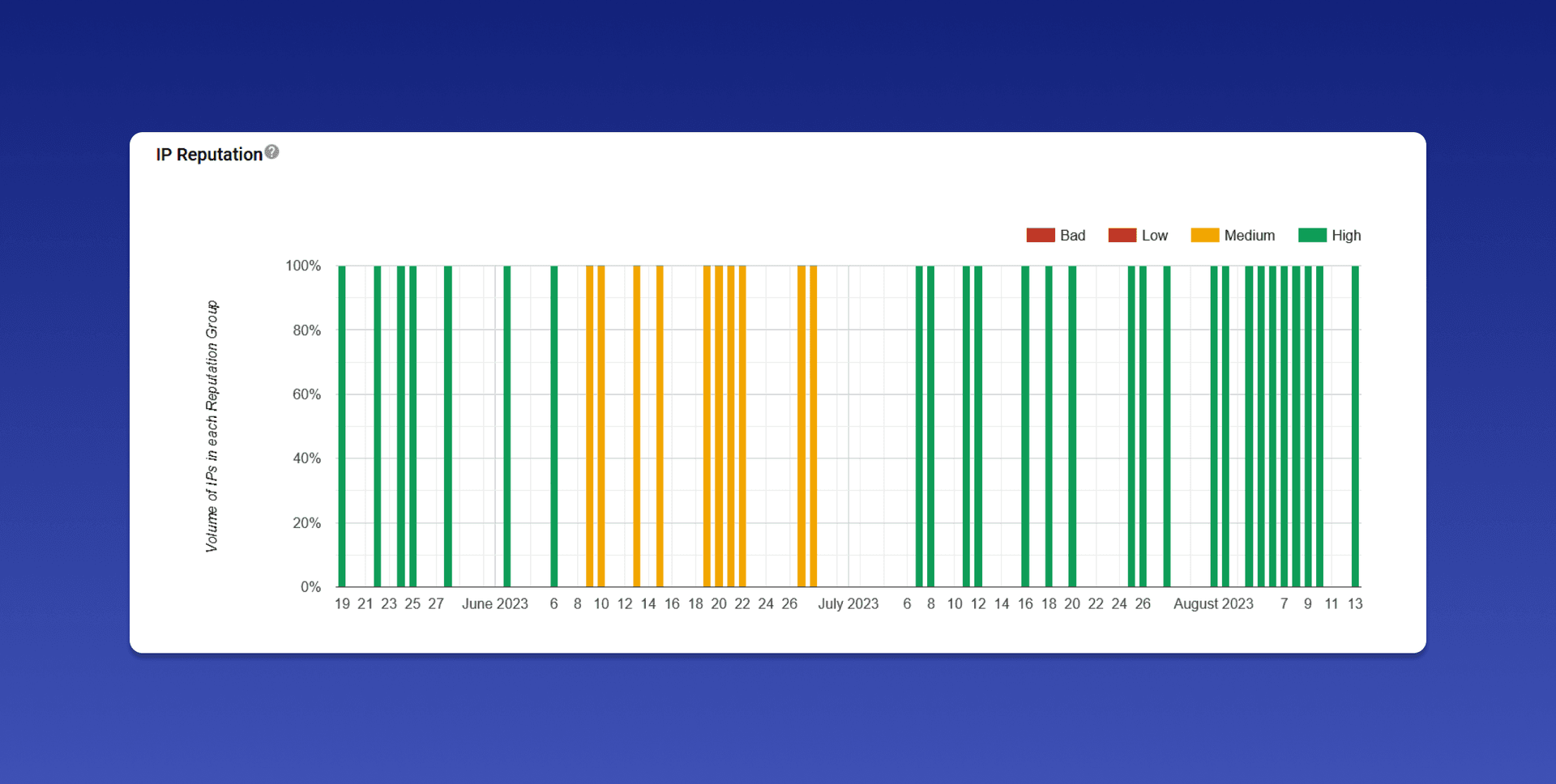
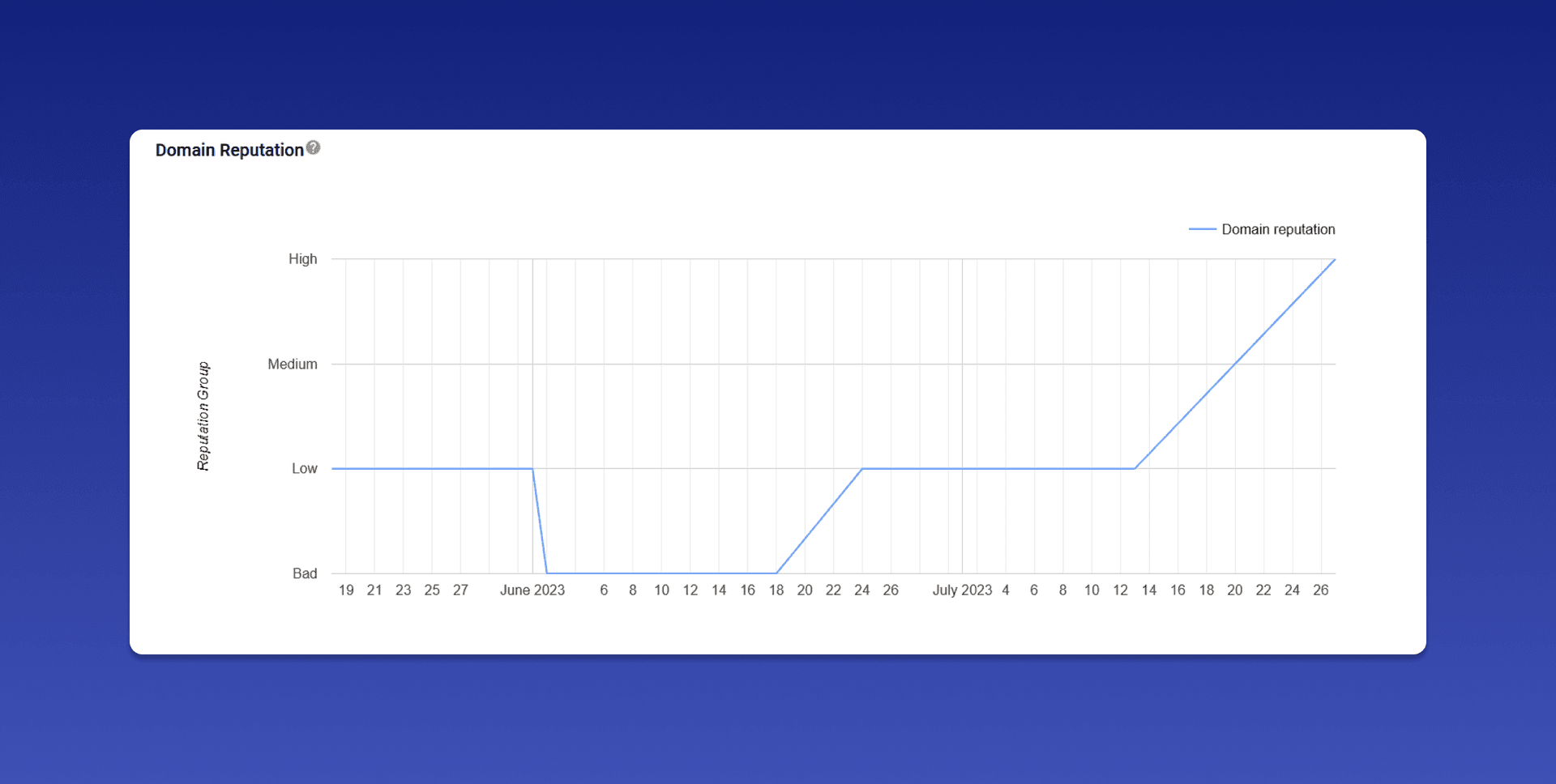
For both, Gmail assigns reputation as “Bad,” “Low,” “Medium,” or “High,” in ascending order from poor deliverability to good. A “Bad” reputation means you are sending what is considered spam on a consistent basis, and consequently are more likely to be placed in the Spam folder for Gmail recipients. On the other end, a “High” reputation indicates solid, good sending practices that are more likely to land in the Inbox the vast majority of the time. Similar to the Spam Rate tab, you can view reputation data daily and make determinations about when your reputation changed and the potential causes.
In the examples above, IP and domain reputation at Gmail declined starting in early June. As a sender, you can utilize this insight to go back and assess any changes that may have occurred to prompt your reputation to decrease around that time. Perhaps the timing aligns to when your company elected to send mass emails featuring legally mandated updates, or when your audience started experiencing list fatigue, but you kept increasing send volumes. Neither is a strong generator of positive email metrics! Since then, you may have committed to sending only to highly engaged recipients, and hope to see improvement in reputation after the dip caused by these counterproductive initiatives.
Other Postmaster Features
While this blog post highlights the most compelling and useful data that Postmaster makes available to senders, Google Postmaster offers other helpful features in addition to the Spam Rate and IP/Domain Reputation. For more detailed information straight from the source on all of the Postmaster components and their definitions, check out Google’s page.
Key Takeaway
Deliverability and your reputation standing are notoriously nebulous and difficult to pin down across most providers. Given the prevalence of Gmail users across virtually every mailing list, Google Postmaster Tools can serve as a shining beacon of light, providing crucial insight into your complaint rates and reputation data where most other ISPs leave you in the dark. So why not take advantage of the largest provider’s generous tool that shows you exactly where you stand?
Ready to get started? Check out our resource on how to add your sending domains to Google Postmaster (set this at the parent domain level), and integrate into our new Deliverability Center.
Related Tags
Be Absolutely Engaging.™
Sign up for regular updates from Braze.
Related Content
View the Blog
The new inbox reality: How iOS changes are reshaping email marketing

Aparna Prasad

Experience optimization: Turning data insights into better journeys

Team Braze

December 2025 Bonfire Marketer of the Month: Jagex’s Emma Oliver
